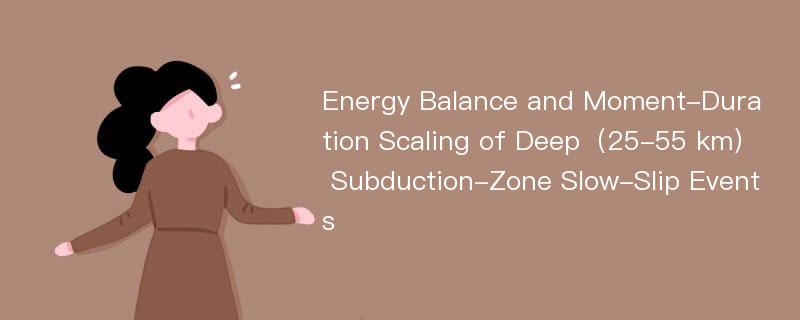
论文摘要
Two fundamental questions with regard to deep(25-55 km) subduction-zone aseismic slow-slip events(SSEs) have not be well resolved:(i) why is scaling between seismic moments(M0) and event durations(T) is scaling rather than the cubed relationship for fast earthquakes, and(ii) why is the rupture speed during a slow-slip event direction-dependent? Geological observations suggest that deep-subduction shear zones at depths of 25-55 km are anisotropic and viscoplastic; the anisotropy is due to the presence of dip-parallel lineaments of mafic fragments created by seamount subduction, whereas the viscoplasticity is due to the presence of mixed brittle mafic and ductile felsic materials in the shear zone. Here, I postulate that a mafic lineament in an overall felsic shear zone acts as a stress guide localizing initial rupture. Subsequent stress concentration along the edges of the earlier ruptured lineament leads to alongstrike rupture through the felsic-dominated shear zone. The second-phase slip-area expansion maintains a constant dipparallel rupture-zone length, inherited from that of the mafic lineament and bounded by the rheological transitions between plastic to viscoplastic deformation and between viscoplastic to viscous deformation. By combining an energy-balance equation with the proposed two-phase rupture model, an analytical expression of the observed linear scaling law in the form of M0 = c0T can be obtained, where ■and its observed value is between 1011.5 to 1013.5 J s-1. In the model expression, L, H, Δz, δ, G, ηe,■ ,■ and are the length, depth, thickness, dip angle, shear rigidity, effective viscosity, and effective coefficients of static and dynamic friction of the viscoplastic shear zone, γ1 is the surface-energy density of the mafic lineament from which the initial rupture starts, ρ is the overriding-plate density, VFW and va are the plate and slow-slip velocities parallel to the shear zone, and g is surface gravity. The model, based on the assumed shear-zone anisotropy described above, successfully predicts fast(~100 km/hour) dip-parallel rupture along high-viscosity(~1020 Pa s) mafic lineaments and slow(2-10 km/day) strike-parallel rupture through low-viscosity(~1017 Pa s) felsic shear zone during a deep-subduction slow-slip event.
论文目录
文章来源
类型: 国际会议
作者: YIN An
来源: 第九届世界华人地质科学研讨会 2019-06-01
年度: 2019
分类: 基础科学
专业: 地质学
单位: Department of Earth, Space, and Planetary Sciences, University of California
分类号: P542
DOI: 10.26914/c.cnkihy.2019.028371
页码: 166
总页数: 1
文件大小: 180k
下载量: 1
